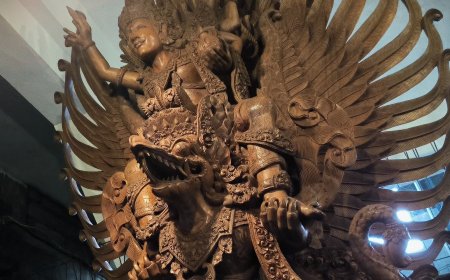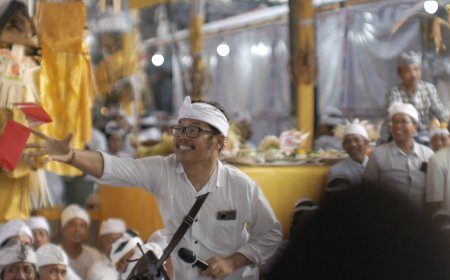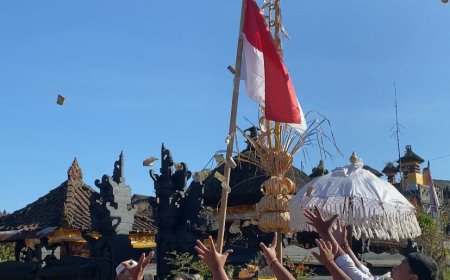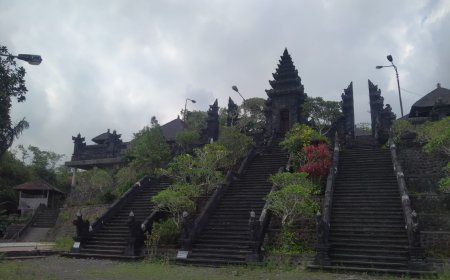Memande: Crafting Sacred Heirlooms in Balinese Society's Tradition
Bali Island, with its captivating natural beauty and diverse culture, has become a renowned destination worldwide. Beyond the stunning landscapes and the warmth of its people, Bali is also rich in valuable and irreplaceable cultural heritage. One of the ancestral cultural legacies that can still be encountered when visiting Bali today is "Memande."

Memande is one of the age-old traditions that shape the unique identity of the Balinese people in the art of weapon crafting. The Memande tradition has existed for centuries and has left its mark on the creation of sacred weaponry in Bali. Memande tradition produces equipment made of bronze, gold, silver, and iron. The birth of the Memande tradition is inseparable from the existence and development of the Pande community in the Nusantara region, especially Bali, which is said to have begun with the arrival of a Brahmana named Sri Agni Jaya Sakti after Rsi Markandeya, bringing along a group of artisans and teachings about weaponry. However, in the eyes of the Balinese community, “Pande” is a term or designation for descendants whose ancestors were professional weapon makers. There is a uniqueness and exclusivity in the Memande tradition that is not widely known by the general public, as not all descendants of Pande possess the skill of crafting these sacred weapons. Only certain individuals can inherit the Memande expertise.
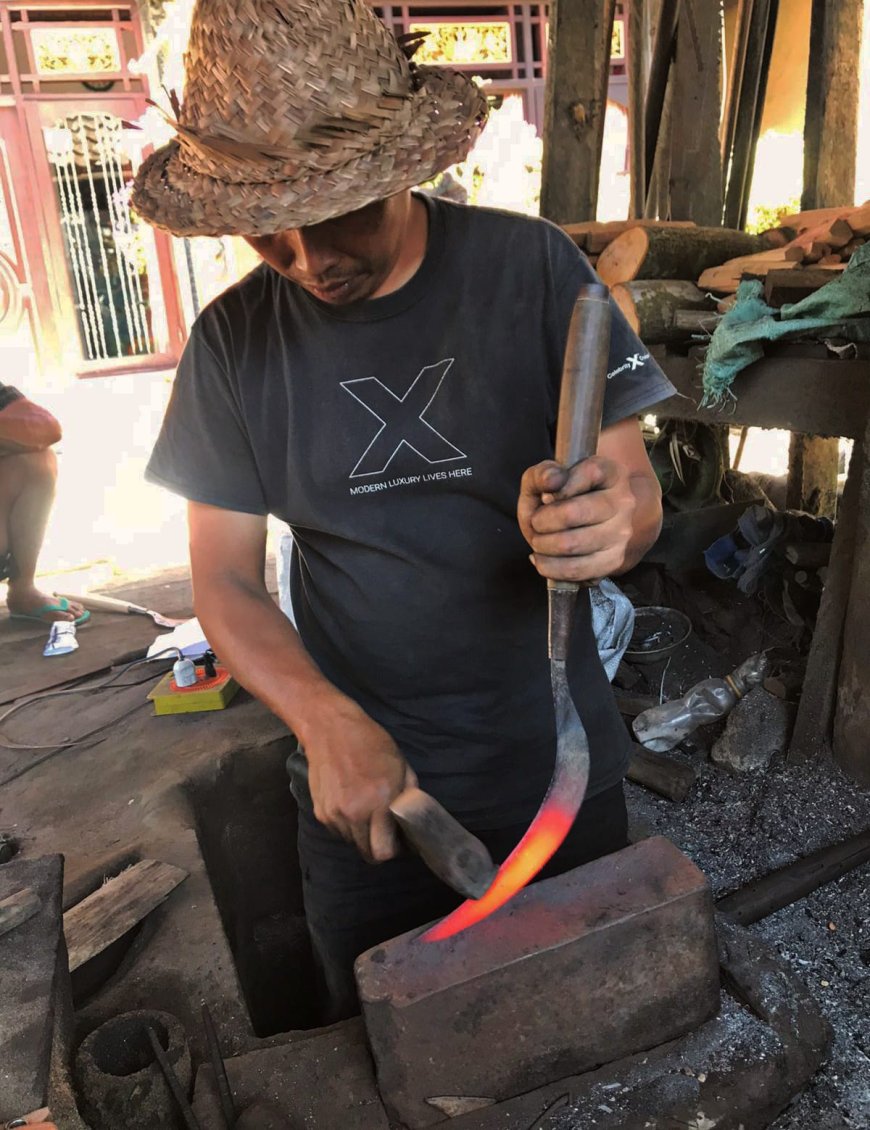
Pande Besi in the crafting of tools (machetes)
(Photo Source: Editorial Collection)
Memande is closely related to traditional Balinese weaponry, becoming an integral part of a living and evolving tradition to this day. These weapons are not only used for self-defense and territorial protection but also play a vital role in traditional ceremonies and religious rituals in Bali, particularly during the celebration of Tumpek Landep. The “Tumpek Landep” ceremony is unique because all heirlooms and sacred weapons are blessed in the hope of achieving “landep” which means sharpness of mind in dharma or goodness as believed by Hindu devotees. One of the traditional Balinese weapons often blessed is the Keris, a distinctive Balinese wavy-bladed knife with an extremely sharp edge. In Bali, Pande Besi is the only Pande community that inherits the specific skill of crafting these weapons. So, what is the actual process of crafting these weapons?
Certainly, the Memande process is equally fascinating to explore. The use of traditional techniques combined with the strength and manual skills in metalworking creates a captivating and rare spectacle. The metal is melted to create beautiful and functional weapons, forged with passion and courage in the fiery red glow of an ancient building called “Prapen” or forge. The metals being melted occasionally dip into water and are forged again until they reach the desired shape. The smoke from the metal melting dances freely in the air, mingling with the distinct aroma of charcoal, accompanied by the resonating sounds of hammer strikes on metal. This harmonious symphony piques curiosity and entices us to watch a Pande at work.
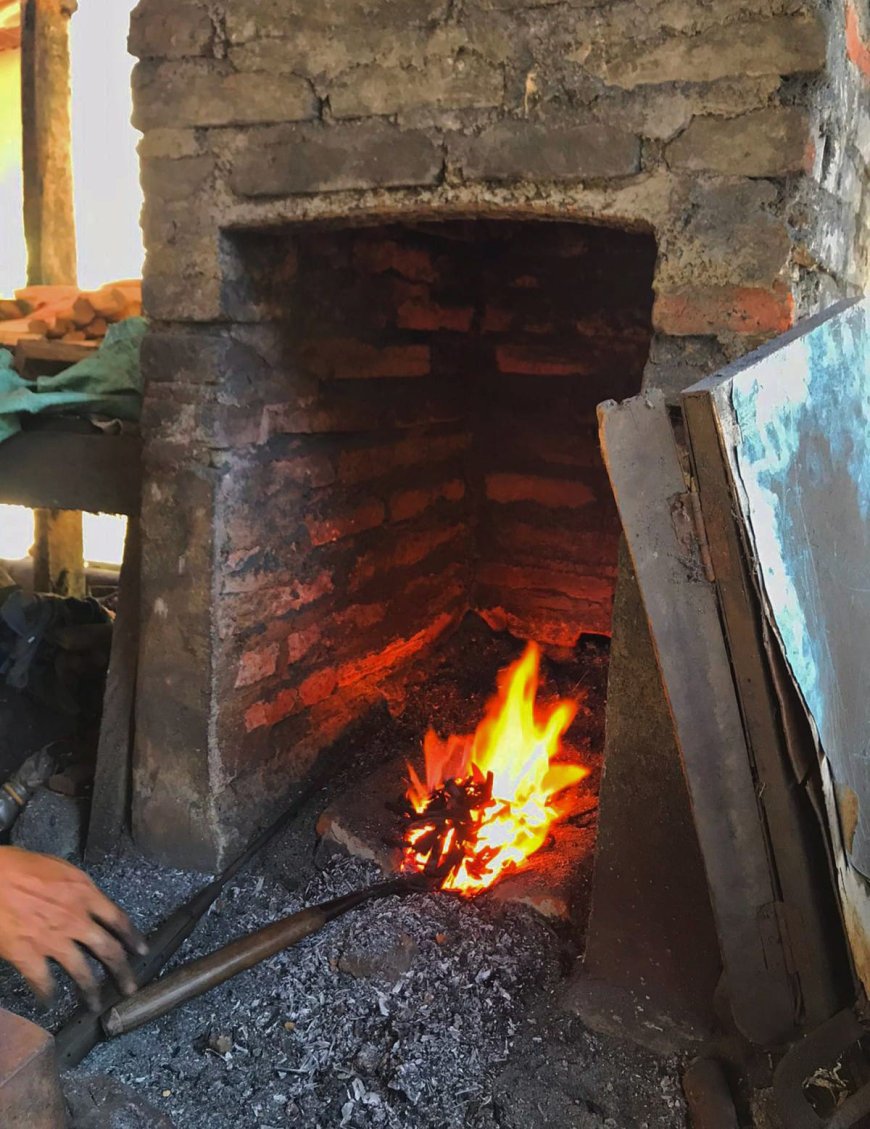
Iron smelting in the Prapen fire
(Photo Source: Editorial Collection)
The forge, resembling a fiery furnace called “Prapen”, bears witness to the turmoil of ambition and expertise of a Pande in giving birth to a highly valuable sacred masterpiece. The existence of Prapen in the Memande tradition also carries a deep meaning rich in the beliefs held. According to I Made Weda, one of the Pande Besi residents in Banjar Selat Kajakauh, Desa Selat, Kecamatan Susut, Kabupaten Bangli, who is also active in Memande activities, a “pelinggih” (a shrine) located within the Prapen building is synonymous with red fabric symbolizing worship and gratitude to Dewa Brahma. In Balinese Hindu mythology, Dewa Brahma is believed to be the Creator by the ancestors. This further solidifies the sacred nature of the Memande tradition, which is carefully preserved.

The Prapen's Pelinggih as a symbol of worship to Dewa Brahma in the Memande Tradition
(Photo Source: Editorial Collection)
The Memande tradition also plays a significant role in Balinese society. It is not limited to weapon crafting; as time has passed and modernization has influenced the community, Memande has also become a source of livelihood and income. Besides their skill in weapon crafting, the Pande community produces various other metal items such as agricultural tools, utensils, and household items. Although the Memande tradition has endured for centuries, it is a fact that modernization and social changes present new challenges for its continuity in the future. Traditional Pande artisans must find ways to stand firm and compete with mass production and modern weapons.
Their expertise in Memande has significantly contributed to the daily life of the Balinese people. The Memande tradition in Bali may have evolved over time, but its value in preserving knowledge, heritage, and the rich and unique Balinese culture remains invaluable. With efforts to preserve and support from the community, this tradition can continue to thrive and evolve in turning metals into art and useful tools, maintaining the connection between the past and the present, ensuring that the beauty and uniqueness of the Memande tradition in Bali will live on in future generations.





































